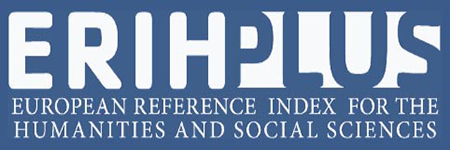Archives - Page 9
-

Globalization and Economic Blocks
No. 32-33 (1997)Globalization and Economic Blocks
Important external signs that occurred in the late 1980s and early 1990s lead us to believe that the era of geopolitics is over and that a new world order is in the making, as a result of recent changes in international economic relations. Everything seems to indicate that the internationalization of the economy and the globalization of markets are the fundamental elements of this emerging order, around which countries could unite to form different blocs.
Today, there is no longer so much discussion about the need for, and the goodness of, opening up the economy, but rather it is considered an unquestionable requirement for development. The debate is focused on how to achieve greater insertion in the international market, at a lower cost and in the shortest possible time.
Central America could not be left behind in this new turn being taken by the countries of the world and is preparing to advance in the opening process and face the challenges of globalization. Although it may be considered that Central American countries still have a long way to go, their situation has changed drastically in recent years. An example of this position is the concerns expressed at some of the Central American Presidential Summits, which went from being focused on issues of pacification and democratic opening, to address those related to economic development, social policy and the environment.
The second five years of the 1990s showed Central America to be a region of peace, with governments elected in democratic processes and with a certain stability in the macroeconomic field. In short, it can be said that regional production is beginning to recover. Central American integration has been reactivated and intra-regional trade has been stimulated.
The globalization of markets and the opening of trade represent a possibility for Central American countries to insert themselves into international flows of investment, trade and technology, allowing for greater economic growth. It is also a challenge because it compels to solve market deficiencies, to improve infrastructure, especially those related to the management of exports and other aspects related to efficient production, in order to take advantage of the opportunities and demands of the new context, without forgetting that successful countries are those that put emphasis and tenacity in technological innovation.
In essence, it can be said that the globalization process tends to integrate the world, generating at the same time a tendency towards a single universal market. Consequently, this potential and true new world economic order should not only mean the predominance of transnational corporations and the major economic powers, as has been the case to date, but should also be committed to incorporating the vast group of developing countries.
-

Modernization of Public Employment
No. 30-31 (1996)Five years ago, ICAP carried out a program for the development and modernization of public employment administration entities, which constituted a sort of milestone in the modernization and institutional strengthening exercise and was an important input to successfully carry out the VII Meeting of Civil Service Directors of Central America and Panama, in Guatemala City, Guatemala, during the period from August 5 to 9, 1996, dedicated to the theme "Modernization of Public Employment". This meeting was originally conceived as part of a permanent process of updating ideas and not as a final product. In fact, it became the main point of reference for Central American thinking on this topic, and consequently the source of inspiration for the preparation of this issue of the Revista Centroamericana, which has been prepared with an unusual focus on the current practices of the State in this area.
The topic of public employment, which often, due to its apparent monotony, goes unnoticed in the great public debates, is essential and exciting in the context of the current moments of modernization of the State, processes of change undertaken in all the countries of Central America. In this profoundly changing frame of reference, the introduction of new technologies, accompanied by new ways of working, require new professional profiles with respect to knowledge, values, skills and attitudes, so that this topic has become a fundamental element for the development of institutions, organizations and companies, and has taken on practical relevance in the Central American public sector, to operationalize the new tasks of the State.
Two major lessons were derived from the space for reflection of this meeting:
* The current management complexity of the entities in charge of public employment administration, and more generally of the human resources function concerning policies, structures, activities and instruments, follows the acceleration of these changes. Hence the importance of renewing not only the civil servants working for public administrations, but also the systems and entities in charge of managing these personnel.
* The challenge of competitiveness and productivity makes the function of public employment one of the strategic objectives of all organizations in general and of the State in particular, so that this work must be integrated into institutional macro-strategies, imposing the need to use in the management of human resources, knowledge, processes, methods and tools of the same nature and equal sophistication as those used in other areas.
-

Modernización del Estado
No. 28-29 (1995)The concern for achieving profound modifications in the State to adapt it to the new realities has emerged as one of the basic conditions for overcoming the economic problems that have been burdening Central American countries for several years, mostly related to their acute fiscal deficit problems. It would be necessary to add the persistent pressure exerted by the position of the international financial organizations, known as the "Washington Council", to improve this situation.
In the eighties and within the framework of the Structural Adjustment Programs, some Central American countries took their first steps to initiate their State Reform processes. Although not all of them have reached similar levels of progress, some of them have managed to reduce public employment, privatize certain companies, and carry out certain transformations in the two main areas of Public Finance, related to expenditure control and revenue collection. It would seem, however, that the fundamental point and basis of state transformation presents some limitations with respect to its definition: the required profile of the State, so that it may in turn be the object and subject of the efforts for change.
It is important to emphasize that the imminent approach of the 21st century and the current world conditions of economic globalization are more than imperative to accelerate the processes of State Reform, always bearing in mind that they will only make sense if they are oriented to achieve that a greater percentage of citizens live in better conditions. If this purpose is pursued, even if the measures affect certain groups in the short term, it will be clear that in the medium and long term, the benefit will be greater and that the sacrifices made will have been fully justified.
In Central America, State Reform and Modernization processes have been undertaken in all countries, with different dimensions, scope and characteristics. Their importance shows the preeminent place occupied, both in the VII and XV Summit Meeting of Central American Presidents, by issues related to the modernization and reform of the public sector, aimed at seeking a more efficient and agile State, focused on facilitating and stimulating economic agents and providing adequate services to the population.
Thus, State Reform in Central America is not a new topic, its conceptualization, analysis, discussion and execution have been addressed for several years by politicians, researchers, academics and technicians, in order to approach this topic from different perspectives, in accordance with the realities of their respective countries. The progress achieved in this area seems to show that expectations have far exceeded reality and there is still much to be done if we wish to achieve a real change that will transform society.
-

Trade negotiations
No. 27 (1994)The cosmopolitan vision of economic activity is a practical reality that conditions the success or failure of macro and microeconomic policies. This has made it necessary to reflect intensely on national concepts and strategies within the framework of open economy models.
Central America's trade relations with the rest of the world do not escape this reality and are facing a particularly dynamic situation in the international economy. This is clearly reflected in the multilateration of many of the foreign trade sectors, ranging from agriculture and textiles to issues such as trade in services, investment and intellectual property.
At the same time, we are in the presence of a phenomenon that has been evolving rapidly in international trade relations, which is the formation of regional economic blocs. Suffice it to cite the case of the Single European Market, the Free Trade Agreement between the United States, Canada and Mexico, the increasingly close relationship between Japan and Southeast Asia, the horizon offered by the initiative for the Americas, FTAA and Central American Integration, among others.
These manifestations have determined the need for the countries of the area to prepare themselves to negotiate in a commercial world organized in a different way, in which multilateral, regional and bilateral negotiations coexist, allowing the countries to have access to the necessary instruments to seek better opportunities for our products in other markets.
This new attitude of Central American countries towards economic policy options in general and trade in particular, compels to negotiate as a sine qua non condition to emerge in a process of trade development. This process generates new issues and problems related to greater participation in the international trade system.
It is evident that the countries of the Central American isthmus have undertaken actions in this direction. The lessons derived are multiple and of high value for the entire region. It is also clear that in order to capitalize on these lessons, we need to make a substantive effort of analysis, reflection and training, to which the Central American Institute of Public Administration, ICAP, is fully committed, offering on this occasion a selection of papers that were prepared to discuss trade negotiation alternatives.
-

International Cooperation Management
No. 26 (1994)In the future, the volumes of economic aid of the 1980s, estimated at approximately US$14 million delivered to the countries of the area between 1981 and 1991 by foreign governments and non-governmental organizations, will probably not return to Central America.
Currently, there are other priorities in the world that need to be addressed with international cooperation resources, such as the Middle East, Africa, Asia as well as the former socialist countries of Eastern Europe.
This results in an inevitable trend of diminishing resources to the region, and thus presents us with the dilemma of "doing more with less".
The change in the flow of international cooperation has created a new situation in which there are both positive and negative aspects. Thus, cooperating countries such as the European Union, the United States, Canada and Japan are becoming more and more concerned about the destination of the funds they provide in order to avoid a repetition of the experiences of corruption and bureaucratic "spider webs". However, there are still obstacles that hinder the delivery of funds to grassroots populations. Among the most serious problems are: very high operating costs, projects formulated from the desk, low institutional capacity to execute them, failure to meet objectives, actions with little social impact, lack of measurement of results and poor compliance in reporting. The list could go on and on, demonstrating the need to develop management capacities in this area.
In response to this situation, the Central American Institute of Public Administration (ICAP), with financial support from the Special Economic Cooperation Plan for Central America (PEC) of the United Nations Development Program (UNDP), has been implementing a training program to address these problems. More than 40 Central American public officials have participated in this program and have been trained not only in aspects of management, information, negotiation of international cooperation, mechanisms and procedures of bilateral and multilateral organizations, but also in methods and techniques for training third parties, because the goal of this program has been to have a broad group of officials from all levels of the state apparatus, the private sector and regional institutions that contribute to modernizing the management of international cooperation in the region.
In this way, we help to guide the efforts and good intentions of international cooperation, so that its results reach those groups that really need it.









